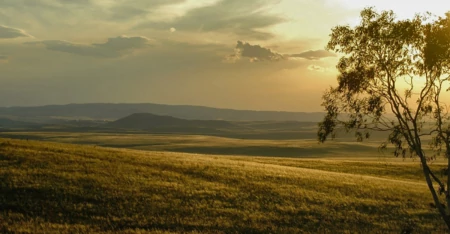A Blueprint for Cooling the Earth
A conversation with regenerative agriculture pioneer Charles Massy
When he was 22 and away at college, Charles Massy got a fateful shock: His father had suffered a severe heart attack, and while it wasn’t immediately fatal, it was clear his dad could no longer run the family farm back home in the Monaro region of New South Wales, Australia. Within days, Massy had shelved his studies and found himself standing in a paddock amid 25 dead merino sheep.
Massy grew up on the farm but hadn’t taken much interest in how to manage it, and now he was scrambling. He figured out that an intestinal worm had killed the sheep, but only after helping to spread it on the property. This was the mid-1970s, during the pre-internet, Olivia Newton-John era, so he hit the library for whatever scientific literature he could find. He read his dad’s books. He consulted the few Department of Agriculture agents who’d give him the time. Embracing the conventional best practices of the time, he soon ran the farm into the ground. When a multi-year drought hit, he nearly lost it altogether. There must be a better way, he thought.
There was—is—and Massy has devoted the years since to becoming a leading practitioner, scholar and writer on a collection of ecological grazing and farming practices that are today commonly grouped under the umbrella of “Regenerative Organic”. Massy’s own progress required plenty of trial-and-error and enduring some withering skepticism, but he restored his family’s land so that it was more resilient to fluctuations in climate, and supported robust, more profitable merino sheep (for wool) and beef cattle. It continues to.
Recently, Massy, now in his late 60s, paid a visit to our Ventura headquarters to speak about his book Call of the Reed Warbler. For Massy, the trip felt a bit like a pilgrimage. He’d been an early customer of Yvon Chouinard’s climbing equipment in the 1970s; over dinner, Massy realized he’d missed Yvon and Rick Ridgeway by a single season when he arrived on Amne Machin back in 1981. For Patagonia, Massy’s visit was an opportunity to hear from an expert on what we’ve identified as one of the most promising ways to save our home planet. “Regen ag” represents a model for not only doing less harm but also doing more good—call it a blueprint for cooling the earth.
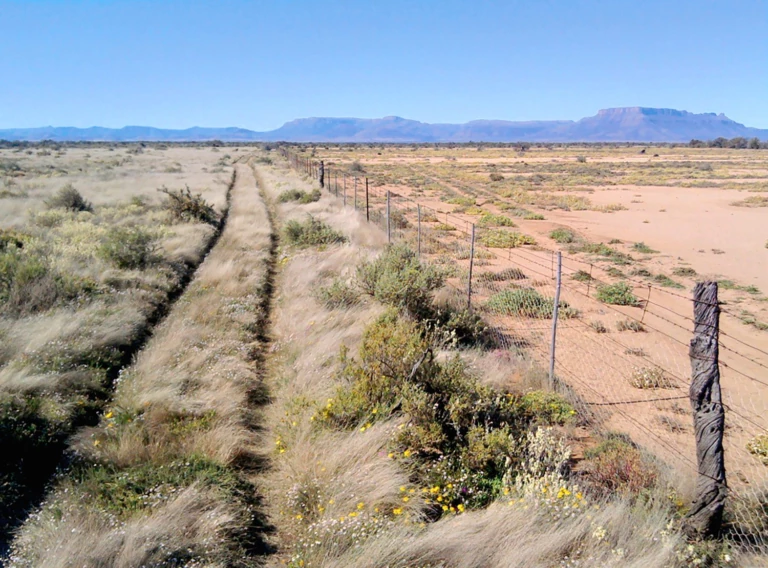
One fence, two ways to cultivate land in South Africa. Norman and Jennie Kroon’s farm, left, is ecologically grazed; their neighbor’s (right) is not. When the Kroons started out in the late 1970s, their patch was as denuded as their neighbor’s. Photo: Norman Kroon
You frequently share a story from your book about a question your grandson posed. That strikes me as a good place to start.
Charles Massy:
Yeah. One Saturday morning, my son-in-law Andrew and grandson Hamish and I were on the way into town, which is half an hour away. We were going to Hamish’s soccer game, and we drove past this big spray rig operating in a field, and I see my grandson looking at this, because we didn’t do that at home. He asked me, “Grandpa, why do we have to kill things to grow things?” And I was stunned. Today I’d just say, ‘Well, mate, we don’t.’ But in the moment, I couldn’t answer him. It echoed for a long time, though, because he cut right through to the huge difference between a dominating, mechanical, poisoning, industrial mind versus a nurturing, holistic, regenerative one.
The difference between those mindsets is clear enough in your book, but can you share more for those who don’t know it?
To what I call the mechanical mind, profits are everything and you just regard the land as a substrate, an inert resource. That is what I got inducted into when I first took over for my father. When I got into trouble, I protected my profits. I wasn’t going to sacrifice my so-called valuable sheep, so we had to buy feed and grain, and if we didn’t sell enough of them, the landscape started to really suffer until we’d denuded it down to dirt. I was protecting my investment—the sheep—and not the landscape. At the end of that five years, I ended up with a big, debilitating debt. As a real nature lover—that’s why I went to university, I wanted to be a wildlife officer—it formed a crazy disjunction. I was doing something that was against my deep inherent appreciation. I sat down and said, hang on, this isn’t right.
Now what we call ecological, holistic grazing hadn’t come to Australia in the ’80s. That didn’t come until the ’90s. So I started to do all the research I could about doing it better, and certainly began to tread more lightly. Then, once the knowledge came to Australia, and you could do courses in it, I started to apply more of these ecological practices. The beauty is, once you start to work in a regenerative fashion, the improvements are dramatic. Nature has this extraordinary capacity to self-organize back to a healthy functional state. In fact, when I’ve gone around to other lead regenerative farmers, I often hear, “My job is to step back and get out of the way of Mother Nature.” From the perspective of the regenerative mind, the thing you don’t sacrifice is the health of the landscape.
Our family has had a kitchen garden for years and there often comes a moment where nature takes its course, testing our resolve to do things organically. I have to imagine on a farm that it’s even harder not to resort to weed killers, for example.
Before I swung over to regenerative agriculture, my father told me that every five to eight years, we would have a plague of wingless grasshoppers—not the big locusts, but smaller guys. When they showed up, they’d cause an instant drought. They ate anything green, even the paint off the veranda post or the flower patterns out of tablecloths on the line. When we swung regenerative, we started to plant a lot of trees and shrubs because the country had been over-cleared. And we started to ecologically graze, so that the ground held more moisture, which meant the nematodes could get up and eat the eggs of the grasshoppers. And we have not had a single grasshopper plague since. So it can take time to disrupt these pest cycles, but then you do.
When you go and visit many regenerative farmers, their farm looks healthy, diverse, and the neighbors’ look, if not dirty, certainly flogged-out and simplified. And I’ll ask, “So what did the neighbors think?” because it’s black and white, right down the fence line, how much healthier their side is. And they’ll say, ‘You know, they never asked me.’ And that’s a protective mechanism because if you’ve been farming 30, 40, 50 years of your life, and the smart-ass next door does something and you decide to go and change, too, you’ve then got to go interact with your community, the one that you’re a part of down at the pub, and basically say, ‘I’ve been wrong all my life.’
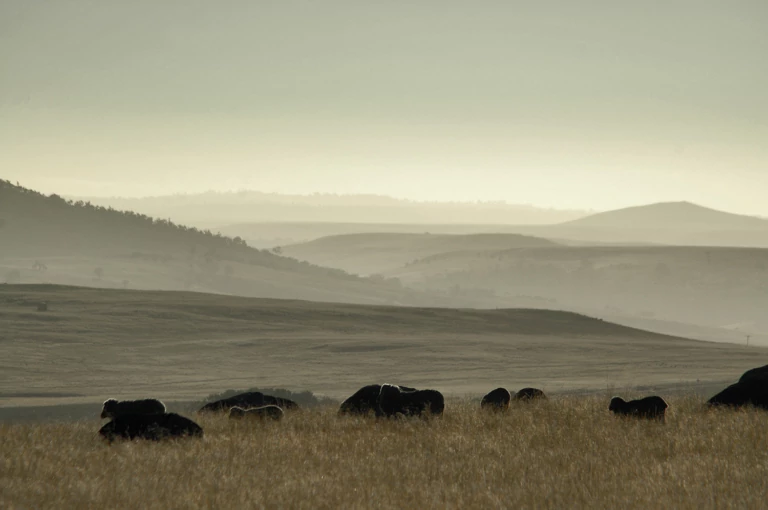
Massy’s come a long way since that fated day his efforts failed to keep 25 merinos from sheep heaven. Today, his regenerative grazing methods yield resilient animals. Photo: Trisha Dixon
Is there a primer that you would recommend for someone who wants to get started on a small scale, with a community garden, say, or backyard garden?
There are some wonderful courses and community supported agriculture here in California. That would be my first step. Meet with people and get a feel for it. But there are some really good books, too, and one I recommend is called Teaming with Microbes: The Organic Gardener’s Guide to the Soil Food Web. It’s a really good distillation of a complex story into layman’s language that lets you know just how important a healthy soil is for healthy food.
Let’s turn to maybe the single biggest reason Patagonia is excited about Regenerative Organic: removing carbon from the atmosphere. Do you see it as a solution for global warming?
I see it as one of the very best solutions, but I also see it as more than that.
Some years ago, Paul Hawken assembled a range of top scientists and analysts to create a list of the 100 best methods to pull carbon dioxide out of the atmosphere because that’s the main cause of global warming. They’re in his book, Drawdown.
And there are seven or eight Regenerative Organic methods there, and if you put them together as one instead of trying to split the cake into little arbitrary things, Regenerative Organic is the best method by nearly 240 percent better than the next method. It’s nearly two-and-a-half times better at burying carbon in the ground than anything else. That’s just so exciting.
The larger point is that while carbon dioxide buildup has led to ice shed and ocean acidification and rising temperatures, since WWII we humans have destabilized nearly all of the natural systems. We’re causing the sixth greatest extinction event. We’ve moved out of the Holocene, where agriculture and human civilization evolved, into a far more dangerous epoch: the Anthropocene, “anthropo” for human caused. We’re destabilizing things to the point where our own survival will become an issue. Yet because everything is integrated in a healthy system, with Regenerative Organic there are all these positive knock-on effects—we store more water, we stop erosion, we encourage biodiversity, all that. It has the potential to help us avoid the dangers of the Anthropocene.
And it’s not just farmers that can get into this. The Regenerative Organic movement will only work when their products are supported by the urban community. It’s a two-way partnership, and together we can really start addressing some of these major challenges tipping us into the Anthropocene. It’s a good news story in a time when news is getting worse and worse.
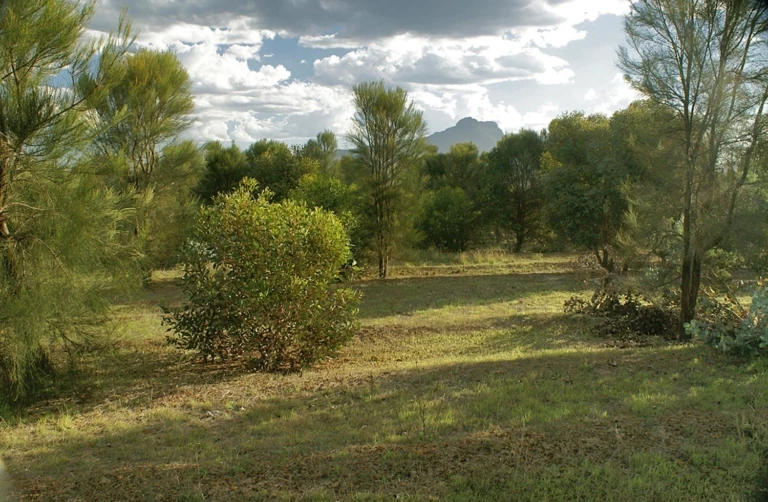
Grasshoppers beware. Massy’s approach to pest control forgoes pesticides in favor of planting more trees and shrubs, creating a healthy ecosystem for predators like toads. A similar approach protects the vitality of these acres in Gondwanaland, Western Australia. Photo: Dr. David Freudenberger
An important theme in your book is drawing on ancient Australian culture as well as the latest science.
We live in a district without many Aboriginal people, but I was lucky to go to university and make some good Aboriginal friends. And from speaking with them and a lot of my own reading I realized just what a prejudiced society we were and still are, by and large. Other than the Bushmen of Africa, Australia has the oldest indigenous culture in the world. When Europeans arrived at the end of the 1700s, 1800s, there were at least 270 nations all located in separate ecological zones with an extraordinarly sophisticated land management approach adapted to their regions. The perception by the arrogant Westerners was that these were dumb savages just wandering around. Quite the opposite. The Aboriginal people had worked out an appropriate form of what you call modified agriculture. They used fire, because we are a continent adapted to fire. Seventy percent of our plants need smoke or fire to germinate. They knew how to burn to encourage growth so that they could hunt kangaroos and encourage certain species. They had forms of proto-agriculture propagating yam. A lot of this is only just emerging now and it’s really changing the perception of agricultural cycles, and “noble savages,” too.
And then I got to know this senior lawman, Rod Mason. About the second time he visited, I asked him about a tree in the front of our house garden that doesn’t belong in our district. I knew there was at least seven when my grandfather bought the farm in the 1920s. So I asked Rod, what do you think of that Kurrajong (which is the name of this tree)? It’s a distinct genus in Australia and it doesn’t grow in our area because our frosts are too tough. And he went up and had a look and then got very emotional. He noted where strips of fiber had been torn off the trunk—fiber that was used historically to make incredibly strong fishing line or baskets, woven material, and pointed out a few other things. They’re very slow-growing trees, and he examined the roots and estimated it was at least 400 or 500 years old. And he said this: “These were a favorite resource tree of old women who would carry the seeds with them everywhere and if they found a wonderful camping site with positive energy for camping, they would propagate these trees. We’ve since found it occurs in a lot of places and I’d been blind to that all my life. We can gain a lot from learning what they know.” Rod’s got a millennia of knowledge behind him. I feel I’m in kindergarten working with this guy.
At the same time, there continues to be new science, new research we can all benefit from. I’m fortunate to have an office right down the hall from some leading experts on earth sciences and climate. While the numbers they’re looking at can be discouraging, what they’re learning is equally useful. What I haven’t seen are any solutions coming from the top down—from policy or government—because of the vested interests in the current system. It’s going to have to be a bottom-up revolution.
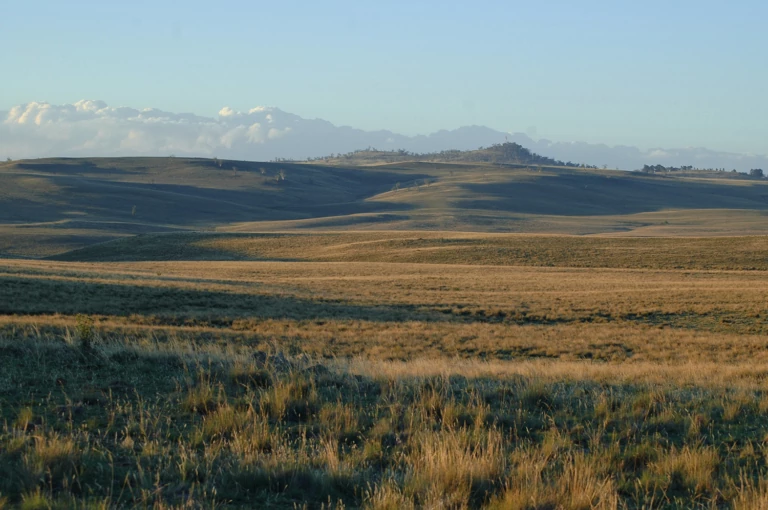
Native grasses on the Monaro tablelands, New South Wales, Australia. Photo: Trisha Dixon
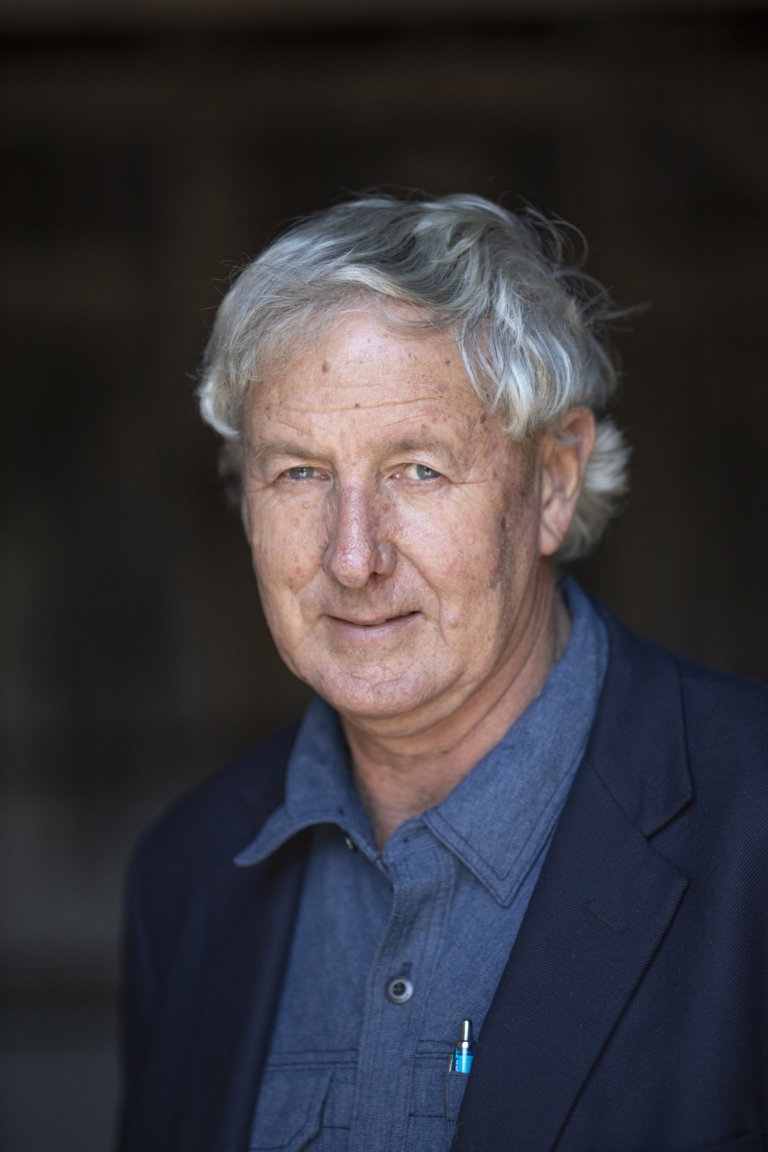
Massy in His Own Words*
In his 50s, sheep farmer and alpinist Charles Massy returned to school to finish a PhD, using his thesis as the basis for his extraordinary book, Call of the Reed Warbler. A mix of memoir, history, case studies and philosophy, Warbler is a graduate seminar (or maybe three) stuffed into an Infinite Jest-sized brick of a paperback. It’s also a manifesto for, as the subtitle declares, “a new agriculture, a new Earth,” one that produces healthier food for people to eat and cleaner fibers for people to wear, all while drawing heat-trapping carbon dioxide out of the atmosphere. When a region is moved away from single crops and aligned with natural biodiversity, lots of critters return: frogs, birds—reed warblers, even. —BW
“Regenerative Organic implies more than just sustaining something, but rather an active rebuilding or regeneration of existing systems toward full health. It also implies an open-ended process: of ongoing improvement and positive transformation.”
“Ecological literacy means the ability to read a landscape.”
“Now we know that in Europe humans have been opportunistically harvesting grasses when in seed for at least 23,000 years. But in Australia this began ten millennia or more before that.”
“Truly healthy animals need both a variety of foods and also to forage in a variety of places. Implications for obesity in humans are frighteningly obvious here, as a lack of satiety from good nutrients means the mind is being told the body is still hungry, and so excess eating occurs.”
“Nature will drive it for you…Most of the time, all we’ve got to do is get out of the bloody way and stop interfering and it’ll fix itself.”
*These excerpts are from Charles Massy’s book Call of the Reed Warbler: A New Agriculture, A New Earth (Chelsea Green Publishing, 2018) and are reprinted with permission from the publisher.
